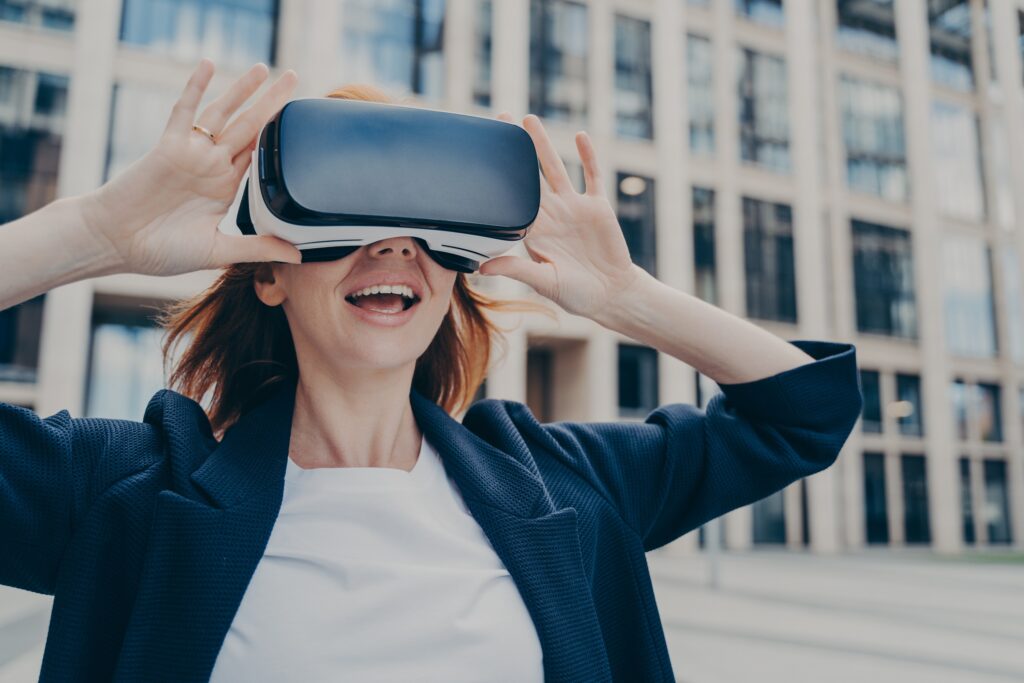
Eye strain can result from using a VR headset. VR headsets place a high resolution screen near the retina. This places a large amount of strain on the eyes. There are ways to reduce this strain. You can use the eye tests and glasses when you are using VR.
Symptoms
VR headsets are a great way for you to immerse yourself in a virtual world but too much can cause eye strain. Not only does this result in sore eyes, but it can also cause headaches and neck aches. These symptoms usually disappear quickly but can be very annoying. To avoid this, make sure you take frequent breaks and calibrate your display settings to avoid eye strain. Excessive VR use can also cause eye twitching, which can last for hours or even days. This isn’t harmful, but it can be uncomfortable and lead to a loss of productivity.
According to the American Academy of Ophthalmology, VR headsets can temporarily decrease the ability to see but don’t cause permanent damage to the eyes. However, a child’s vision is still developing, and it’s not advisable for them to use VR for extended periods of time.
Overworked eye muscles can cause eye strain. These muscles move the eyes within the socket. These muscles are also known as extraocular muscles. The physical strain on the eyes has increased with the increasing number of virtual reality headsets. These changes can cause blurred vision, double-vision, headaches, and other problems.
VR has also been linked to vergence-accommodation conflicts, which cause the eye to focus differently. In a normal situation, eyes adjust to focus on objects that are near, or far, but in VR, it takes more effort to do so, forcing the eyes to work harder. While these changes may cause eye strain, these problems will generally resolve themselves once the headset is removed.
Although the cause of VR eye strain is still not fully understood, experts believe that VR headset users may experience eye strain from prolonged use. Common Sense conducted a 2017 study that found that 33% of VR headset users over the age of 8 reported experiencing eye strain. The findings were consistent with previous studies.
Causes
Eye strain in VR is a common problem for people who wear VR headsets. While it is not a serious condition, it can result in physical and mental fatigue and can decrease productivity. Fortunately, there are a number of ways to avoid this problem. One way is to calibrate your display settings. Another option is to take frequent breaks during VR sessions. After a VR session, it is important that you take deep breaths and massage the eyes.
Eye strain in VR can be caused by staring at the screen for long periods of time. In addition, prolonged use of VR can lead to a condition known as heterophoria, which causes the eyes to point in different directions at rest. This can cause long-term vision problems and can be treated with visual therapy or prism glasses. So, while VR is not harmful to your eyes, it can lead to temporary eye fatigue and discomfort.
VR headsets can also cause eye strain. The headsets are heavy and can put pressure on the eye sockets. These headsets can also heat up and be heavy. These factors can cause eye strain, which can be both uncomfortable and can even lead to pain.
In addition to these factors, prolonged use of VR can cause eye fatigue because it forces users to focus more on interpreting the projected image. VR can also inhibit the blinking reflex, which is necessary to keep your eyes moist. These effects are temporary and should be monitored by a doctor to determine if further treatment is necessary.

While using a VR headset, the eyes are exposed to high-resolution screens, which can lead to severe eye strain. Users can experience blurred vision, misjudged the distance, or even severe myopia, which is a risk factor for multiple eye problems later in life. If you experience eye strain while wearing a VR headset, stop using it and consult a doctor.
In addition to eye strain, VR headsets are associated with visual-induced motion sickness. This condition can cause lightheadedness, headaches, sweating, nausea, and vomiting. It is a known problem that has hampered the widespread adoption of VR headsets. As a result, the use of these headsets in children and people with vision problems should be limited.
Treatments
VR can cause eye strain, which is a common side effect. It can lead to double vision, headaches, neck pain, and sore eyes. It is not harmful, and usually goes away after some time, but it can be uncomfortable. You can treat VR eye strain by calibrating your VR display. It is also helpful to consciously blink when you use the headset. To relieve eye strain, you should take frequent breaks while wearing the headset.
Another common problem caused by VR is dry eyes. Dry eyes can occur at any screen time, but VR users who spend a lot of time in VR are more likely to experience it. This is often due to a lack in blinking and may lead to dry eyes.
In one study conducted by the University of Leeds, 20 children aged eight to twelve were examined after playing VR for 20 minutes. Of these, two children reported disruption of stereo acuity, a measure of distance between objects. Although the symptoms were not severe, they could have been more severe if the children stayed in the immersive VR environment longer.
Short breaks are a good way to relieve eye strain when using VR. These breaks can include looking out a window, or taking a short walk. VR headsets can also be modified to improve vision. Companies such as GiveVision have developed SightPlus devices that project video of the real world onto the working part of the retina.
In addition to VR headsets, VR vision therapy is also a good option for those with binocular vision disorders. In conjunction with traditional vision therapies, VR is effective for treating strabismus, a condition where both eyes don’t look in the same direction at the same time. This condition can lead to double vision, headaches, and eye strain. Untreated strabismus may also lead to amblyopia (a condition in which both eyes don’t work together).
Eye strain is a common side effect to VR. It can cause blurred vision and misjudged the distance. Although it is unlikely that VR headsets will cause permanent damage, prolonged use can cause temporary problems like heterophoria. This is when your eyes point in different directions at rest. It is important to remember that VR headsets can cause eye strain and can be treated.
Prevention
If you play virtual reality games for long periods of time, it can cause eye strain. Regular breaks and stepping away can help your eyes stay healthy. Also, it is important to make sure you get the right VR headset for you. You may need to adjust the focal distance and straps depending on your vision and other physical conditions to ensure comfort.
Eye strain from VR is common but it can be easily prevented. It is usually harmless and a sign that your eyes need to rest. Using VR headsets for prolonged periods of time can cause eyestrain, which can lead to headaches and decreased productivity. Eye twitching can also be caused by excessive VR headset use. These twitching sensations may last for hours or even days. They aren’t dangerous, but they can be annoying.
Wearing contacts or glasses with specialized glasses can reduce eye strain. These lenses are made to reduce the amount of glare a VR headset will create, allowing you to focus on the screen for longer periods of time. While these glasses can reduce some of the strain, you should still use them in moderation and schedule breaks.
Another way to prevent eye strain is to check your eyes before starting to play VR games. It is best to discontinue using the headset if you notice any changes in your vision, or if you feel that you are experiencing eye pain, You can also visit your eye doctor for a thorough eye examination to rule out any eye problems. Your eye doctor can give you suggestions for how to use VR headsets properly. You might be experiencing computer vision syndrome.
VR headsets should be stopped if you or your child are experiencing visual symptoms. It is important to take breaks and not consume too much caffeine or other stimulants. These stimulants can cause visual fatigue. The American Academy of Ophthalmology says that there is no risk of permanent vision damage due to VR.



